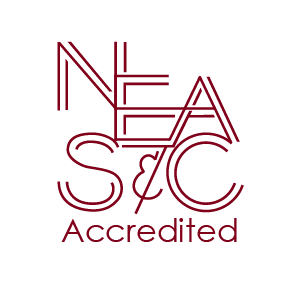School One purchases a house across the street to use for administrative offices, freeing up an additional classroom in the main building.
School One launches its community literary programs, including the statewide Write Rhode Island contest for teens and evening writing classes for adults.
Physics Lab and the school’s bathrooms renovated. The original benches brought over from School One’s bowling alley days develop a crack and are decommissioned.
School One celebrates its 40th birthday with the “Make it a Million” endowment campaign.
Champlin Foundations grant to transform the digital arts classroom, enhancing the arts and video curricula.
First student from China enrolls at School One, adding even more diversity to the vibrant School One community.
School One resumes submitting to the Scholastic Art Awards and students begin racking up honors.
Rebuilding Together and a 100 volunteers do a School One building makeover. The Library gets demo-ed and becomes the “the library.”
Jennifer Borman becomes School One’s 5th Head of School.
Champlin grant to renovate two arts classrooms for classes like metalsmithing, 3-D art, modern media, and illustration.
Reaccreditation; First e une, School One’s journal of ideas, is published.
The Ghouli-wed game debuts at School One’s annual Halloween community celebration, quickly followed by the Satan versus Santa game for December celebrations.
School One creates its first strategic plan. Priorities include improved outreach to the wider community, technology, fundraising, and furthering strengthening teachers’ practice.
Testimony by four of the Schools students helps pass the RI Gay Civil Rights bill.
School One becomes accredited by the New England Association of Schools and Colleges
You are here: School One moves to its current home on 220 University Avenue.
Portfolios implemented as a graduation requirement.
Denise Jenkins becomes head of school. A Committee of staff and board vow to continue financial aid as the School’s financial priority to ensure a diverse student body; staff commit to increasing academic standards across the board; student brings the first cell phone to schools (about the size of a shoe box).
1st yearbook published. 1st New York City trip.
Graduation Board of Review process implemented. Graduating seniors present to a panel on their learning, growth, and realistic plans for after high school, including college.
1st School One “prom” held, at the glamorous Knights of Columbus Hall.
The “Nerd of the Week” award is established, followed in later years by the “Artist, Jock and Community Members of the Week.”
Cary Honig hired as an English teacher, after abandoning his Harvard Law degree; Cary, his mustache, and his high standards have remained at School One ever since. Under Cary’s aegis, Newspaper One is born.
First computers – Apple Macintoshes – arrive at School One.
School One shares its space with Gallery One, co-founded by artist Barnaby Evans. Other arts partners in the building include 2nd Story Theater, under the direction of Pat Hegnauer, and The Music School, founded by Alan Fox.
Growing out of its funky but cold bowling alley space, School One moves to a former Catholic school building on John Street on the East Side of Providence.
Reading specialist Bill O’Hearn becomes School One’s new director.
Richard Lan takes over as director. School One students continue to propose their own classes, learn through engaging with the wider community, collaborate with their teachers, and hold “site placements,” an early form of career internships.
School One starts its first art gallery under the direction of art teacher Alfred Quiroz.
Parents from beyond Providence expand ALP by forming School One so that students from around the state can enroll. School One and ALP coexist in the Pine Street bowling alley with Art Dion serving as School One’s director.
Activist parents and educators approach the Providence Public Schools to establish the Providence Free School and the Alternative Learning Project (ALP) to bring relevance and student voice into education.



